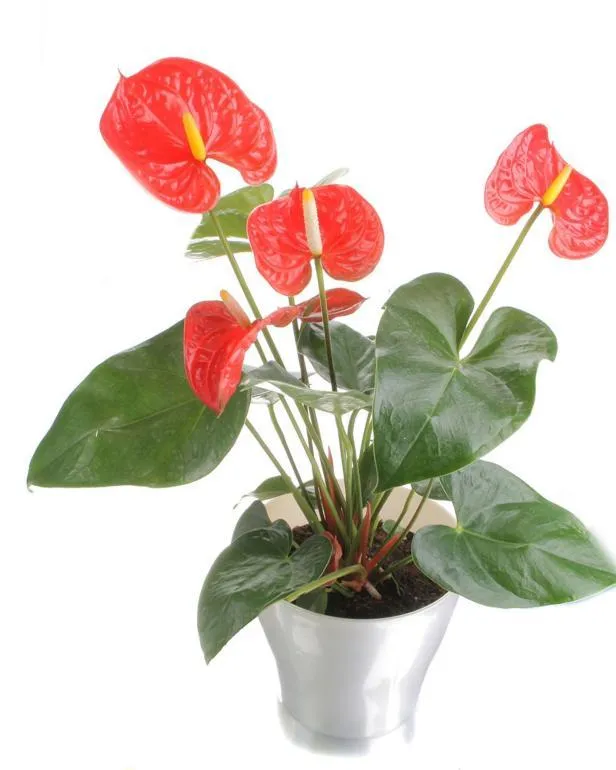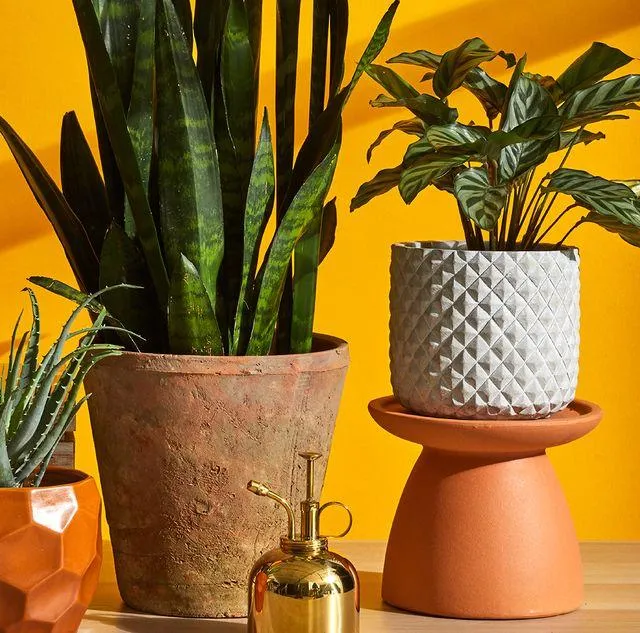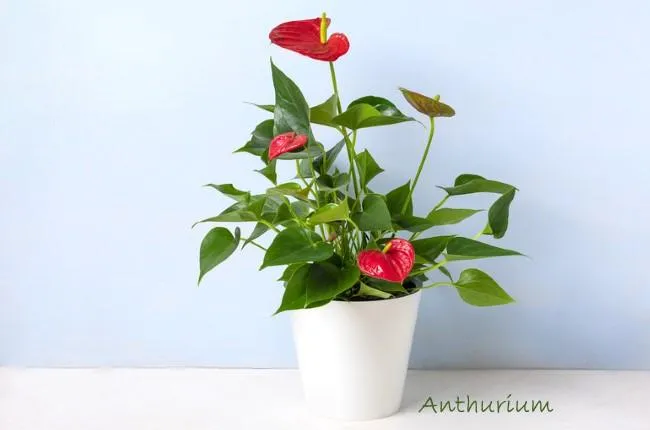Introduction to Indoor Trees That Bloom
With their beautiful blooms, indoor trees are a great way to bring nature inside all year round. Whether you’re looking to liven up a home or office space or want something low-maintenance, flowering trees can be a smart choice. In this article, we’ll explore some popular options as well as answer common questions users may have about caring for and enjoying these leafy beauties.
Top Indoor Tree Choices
Poinsettia
Famous for its vibrant red bracts (modified leaves) during the winter holidays, poinsettias actually bloom from late fall through early spring. With proper care, the cheerful plants can last for months indoors. From my experience, poinsettias appreciate moderate water, humidity, and plenty of sunshine by a south-facing window. They’re forgiving to groom, too, as you can simply prune off wilted sections to keep them looking their best.
Azalea
Azaleas offer such lovely blooms in shades of pink, red, and white. They show off in spring and can return later in fall for an encore. Humidity-loving azaleas do well near other houseplants or in bathrooms. Just watch that they don’t dry out, as root loss can stunt future flowering. These versatile beauties bring the outdoors in with ease.
Citrus Trees
How stunning are mini potted citrus trees heavy with greenery and sweet-smelling blooms? Favorites include Meyer lemon, kumquat, and mandarin orange. Though a bit more demanding than other options, citrus thrive in sun with regular water and fertilizer from spring to fall. Their cheery blooms herald season changes year after year—and who doesn’t love snacking on the nutritious fruits?
Caring for Indoor Blooming Trees
Now that you’ve picked out your perfect flowering tree, here are some tips for helping it remain happy and healthy indoors:

- Light – Most trees require lots of natural brightness, so position near an east- or west-facing window. Watch that leaves don’t scorch in too-strong afternoon sun.
- Water – Check soil frequently and water when the top inch feels dry. Some signs of underwatering include droopy leaves. Overwatering can cause root rot, so allow excess moisture to drain fully between waterings.
- Temperature – Most bloom best between 65-75°F. Nighttime temps of 60-65°F may help prolong blooms. Winter may warrant extra warmth.
- Fertilizer – Use a diluted, balanced houseplant variety in spring and summer once a month. Too much could damage root systems. It’s kind of like a healthy diet for humans!
- Pruning – After flowers fade, simply trim off spent blooms or branches to encourage new growth. Be careful not to cut into green, living portions. Deadheading keeps your tree looking good!
The key thing to remember is observing your tree and adjusting care based on its needs. With some TLC, your blooms should return brighter each season!
Common User Questions
Now that we’ve covered the basics, let’s look at answering a few questions users searching for “indoor trees with flowers” may have:
How long do the flowers last?
Bloom times vary by species but generally range from a few weeks to a few months. Poinsettias may hold their bracts for over 2 months with care. Citrus and azaleas tend to offer colorful displays for 4-6 weeks. Proper growing conditions and deadheading spent blooms can help extend floral shows.
Are the trees messy or high maintenance?
Most flowering trees suited for indoor growing are actually quite low maintenance. They don’t shed heavily or cause pollen messes indoors like some outdoor plants. Trees like poinsettias and citrus clean up nicely with an occasional pruning. Just watch for occasional insect pests and treat promptly with non-chemical solutions if spotted. Overall, these beauties add ambiance without too much workload.
Will the blooms return each year?
Under ideal circumstances, many indoor trees can re-bloom annually with care. This includes giving them winter rest periods to mimic seasonal changes. Poinsettias, azaleas, and even mini citrus are capable of returning to flower again next season with diligent care. It takes some TLC, but the payoff of blossoms is totally worth it if you ask me!

How do I get my plant to reflower?
To encourage reblooming, follow these tips after the first flush of flowers has finished:
– Prune off spent blooms to redirect energy back to the plant
– Fertilize monthly through summer with a balanced, diluted formula
– Gradually reduce water and exposure to darkness over winter
– In spring, increase light, water, fertilizer to mimic seasonal changes
– With some luck and patience, your tree should set buds again come flowering time!
In Summary
Whether you want a splash of color, natural fragrance, or just to bring the beauty of blooming branches indoors, flowering trees are a wonderful option. Their ability to brighten up any space with very little work makes them a super smart choice. With proper care matching their preferences for water, light and nutrition, azaleas, poinsettias, citrus and other trees can provide endless blooms to enjoy. I hope exploring these tips has helped reveal the joy of indoor trees to you! Please let me know if any other questions come up—I’d love to help more. Wishing you flowering success!
Indoor Flowering Trees for Home or Office
| Name | Flower Color | Light Needs | Watering | Care Level |
|---|---|---|---|---|
| Jasmine | White, yellow | Bright indirect light | Keep soil moist | Moderate |
| Poinsettia | Red, pink, white | Bright light | Allow soil to partially dry | Easy |
| Azalea | Pink, red, white, yellow | Bright indirect light | Keep soil moist | Moderate |
| Chrysanthemum | White, pink, yellow | Bright light | Allow soil to partially dry | Easy |
| Hawaiian Ti Plant | Small white flowers | Low light | Allow soil to partially dry | Easy |
FAQ
-
What kinds of indoor trees flower?
There are several varieties of indoor trees that produce blooms. Some common choices are cherry blossom trees, Peace Lilies, Chinese evergreen, and orchids.
-
How often do indoor flowering trees need sunlight?
Most indoor flowering trees require moderate to bright light. Otherwise the blossoms might not fully develop. They should get several hours of direct sunlight every day if possible. But with less light, they’ll basically still survive.
-
Do indoor trees that flower need fertilizer?
While not always necessary, fertilizing indoor flowering trees occasionally could help. Throughout the growing season, every few months use a diluted liquid houseplant fertilizer. This provides nutrients and appears to support larger and longer lasting blooms. Probably worth a shot, right?

-
How long do the flowers last on an indoor tree?
The life of flowers can differ a lot depending on the variety. Cherry blossom blooms might only hold on for about a week. Whereas orchids sometimes flower for months. Most other common indoor tree flowers hang around for two to three weeks. But conditions can impact this, like temperature and water.
-
Is it hard to care for an indoor tree that flowers?
With a little effort, indoor flowering trees are definitely doable even for novice gardeners. Water when the soil becomes slightly dry, keep them in bright spots, and use fertilizer occasionally. Additionally, pruning might be necessary over time to maintain shape. While requiring some attentiveness, flowering trees can really bring beauty indoors with only modest care. Maybe one will spark amazing memories for you too!
-
What pests affect indoor flowering trees?
Mealybugs and scale insects sometimes plague potted trees. Look for cotton-like substances or hard shell bugs attached to leaves and wood. Wipe off with cotton balls dipped in rubbing alcohol. Unfortunately, aphids also target new growth. Imitate Aphrodite and spray them away with insecticidal soap. Nevertheless, prevention is key so check for signs early before problems arise. With some TLC, your blooming buddy should stay bug-free.
-
Do indoor flowering trees lose their leaves in winter?
It depends on the variety. Some trees like orchids and peace lilies are evergreen and their leaves persist year-round. Meanwhile, specimens mimicking deciduous trees such as cherry blossom varieties may drop foliage as seasons change. Provide less light and minor pruning through the dormant phase. Then brighter conditions in spring will stimulate fresh new growth and stunning spring blooms, hopefully!
-
Is it difficult to find pots for indoor flowering trees?
Not at all. Many common houseplant containers suit flowering tree needs well. Look for pots with drainage holes that are roughly two inches wider than the current root ball. Terracotta, plastic, and glazed ceramic planters all work. For trees staying small, consider creative pots like artistic buckets. Larger varieties deserve handsome cachepots or classic azalea rings. The options are kind of endless – let your aesthetics guide the choice!

